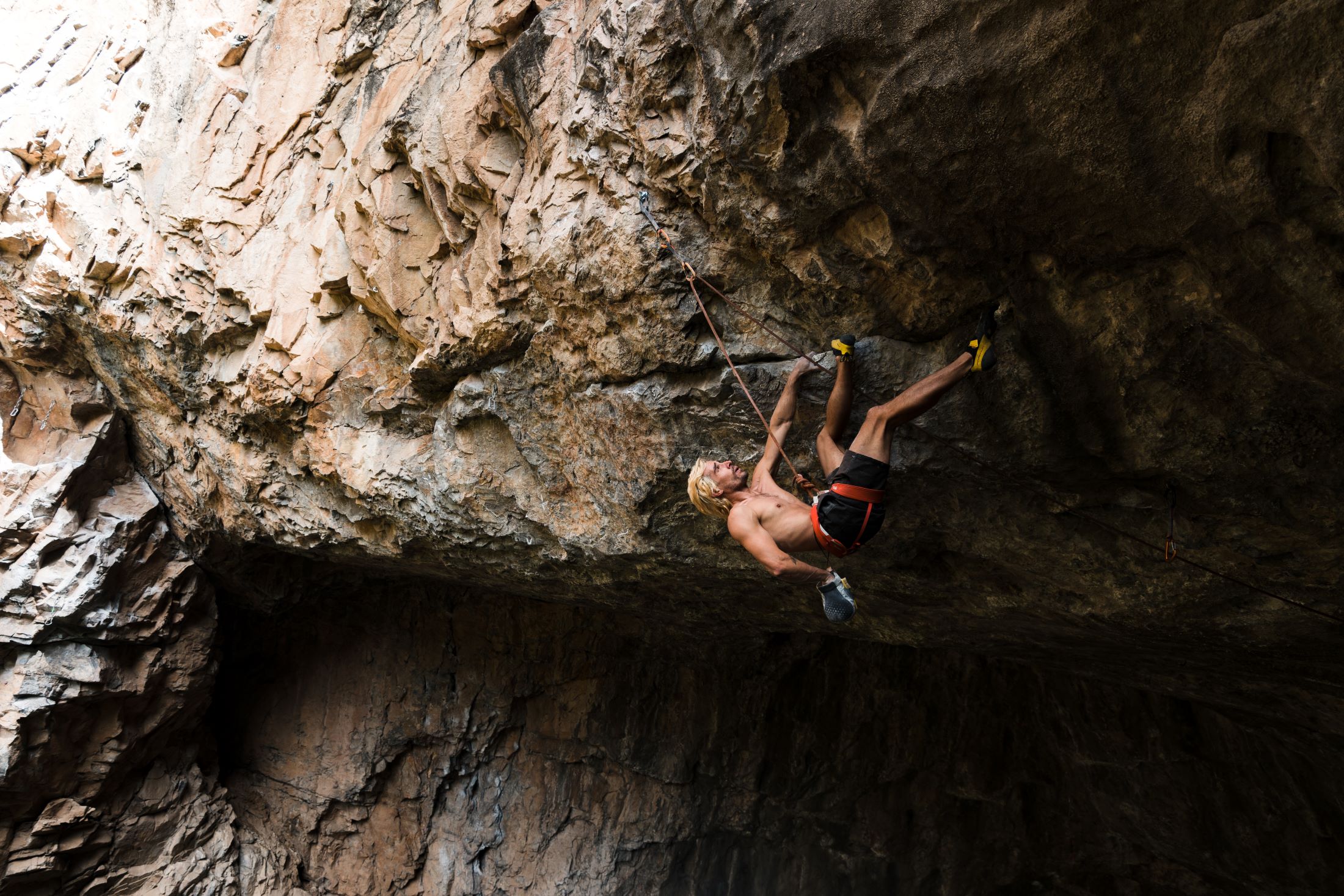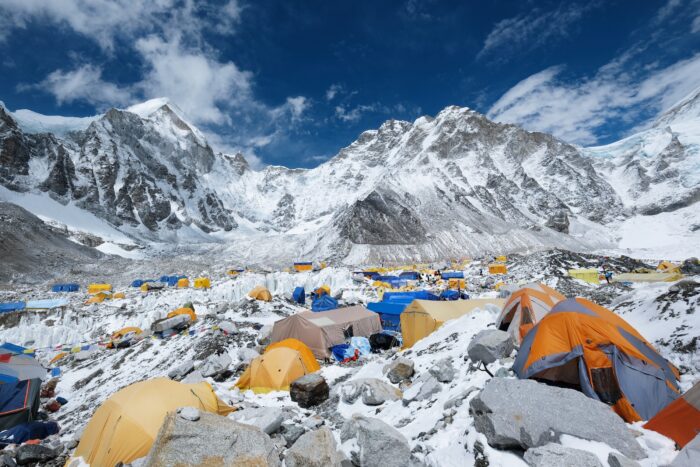The United States is not like Europe, where a single region might have multiple lifetimes’ worth of sport climbing. And be adjacent, only a half day’s drive, from another region that’s equally laden with perfect limestone cliffs.
For example, on the continent, the epic destination areas of Céüse, France, and Siurana, Spain, are only 8 hours apart. But driving 8 hours east from my home in Boulder, Colo., lands me in the plains of Kansas — not even halfway to the Red River Gorge. On the plus side, our country’s size and geologic and geographic diversity also mean our sport climbing areas have lots of character, each with its own unique climbing style and history.
Though you wouldn’t know it now, given how many Americans sport climb and how many get into it via the gym-to-crag pipeline, there was initial resistance to sport climbing in the U.S. Bolt wars were fought in the late 1980s as the first sport climbs appeared around the country, to the chagrin of certain old-school trad climbers.
Today, however, sport climbing development continues apace. New routes go up on our abundant sandstone, limestone, granite, and volcanic rock, particularly in the Southeast and West.
Picking the top five options from among America’s many sport climbing cliffs was a tall order. But some clear winners emerged when factoring in things like rock quality, quantity and grade range of routes, access and camping, and weather. The mega-destination crags are listed below, each with more four-star classics than one person would ever have time to climb.
Best Sport Climbing Areas in the United States
1. Red River Gorge, Kentucky: Pump Fests at All Grades

Yes, Europe, with its untold perfect limestone crags, has the best sport climbing in the world. But it’s telling that the Corbin sandstone of the Red so rivals Europe in quality that, during the busy fall season, you’re just as likely to see international climbers at the Red as Americans.
The featured, vertical to radically overhanging pocketed stone, which often forms in the Red’s trademark amphitheaters (“hollers”), is that good. And there are thousands of climbs, all in proximity, with gobsmacking classics at every grade from 5.10a to 5.14d. There are rope-stretching, mega-pump-fest pitches on handlebar buckets and incut pockets so deep you can’t believe you’re falling off them. Until you hit the end of the rope and feel the lactic acid soaking your forearms.
The Red was originally a traditional area, with a host of classic crack pitches up corner cracks and splitters, especially in the Northern Gorge region. But the Lexington local Porter Jarrard and friends got things rolling with the area’s first sport routes in the early 1990s. The climbs they put up on OG walls like The Motherlode, Military Wall, and Left Flank are still sought-after classics today.
There is a staggering amount of rock, much of it still undeveloped. Still, thanks to efforts by local bolters and the tireless Red River Gorge Climbers’ Coalition, new climbs continue to go in. Recent areas like Muir Valley and Miller Fork offer hundreds of stellar options, often at more-approachable grades.
The Basics
- Season: Autumn through spring (it can be cold and snowy in winter, though you also get dry, warm days with highs in the 60s); summer is a sauna, even in the shade.
- Camping: The best option on a budget is Miguel’s Pizza, a restaurant that has evolved into a massive climber campground as the Red gained popularity. Or check out the Bald Rock Cabins & Campground above The Motherlode or Lago Linda. There are also tons of climber-friendly Airbnbs.
- Guidebooks: Red River Gorge Rock Climbs South covers the bulk of the sport areas, or you can go for Red River Gorge Select, which also includes the northern region crags and Miller Fork. Route development is ongoing, so supplement with Mountain Project beta.
- Recommended routes: Pogue Ethics (5.9+), Plate Tectonics (5.10a), Loompa (5.10c), Breakfast Burrito (5.10c/d), Amarillo Sunset (5.11b)
2. Ten Sleep, Wyoming: Pocket-Pulling Paradise

The Basics
- Season: Late spring through early autumn (the area is best in high summer, especially at the higher-elevation crags)
- Camping: There are dozens of undeveloped sites along the Old Road, though these get snatched up quickly; you’ll find other camping options throughout the Bighorn National Forest — pick a campground or dirt road and explore. Climbers also stay at the Ten Sleep Rock Ranch, near the mouth of the canyon.
- Guidebooks: Ten Sleep Canyon Guidebook (10th Edition) and Ten Sleep Canyon Climbing
- Recommended routes: Death Flake from HELL (5.10a), Beer Bong (5.10b), The Eldorado Coral Club (5.10d), Slightly Toasted Cracker (5.11c), Center El Shinto (5.12b)
3. Rifle, Colorado: Limestone Sport Climbing Mecca

The Basics
- Season: Spring through autumn (spring can be seepy; check conditions before your trip)
- Camping: There are lovely pay spots in the popular Rifle Mountain Park campground above the canyon proper, or drive up the road into the Flattops and White River National Forest.
- Guidebook: Rifle: A Climber’s Guide
- Recommended routes: Spuds in Space (5.9-), Merry Maids (5.10a), Malmsteen (5.10d), Rumor Has It (5.11b), Feline (5.11b)
4. New River Gorge, West Virginia: Sport Climbing on Impeccable Sandstone

The Basics
- Season: Autumn through spring (summer is hot and muggy — locals only!)
- Camping: The American Alpine Club’s New River Gorge Campground, upon the scenic gorge rim, is the way to go.
- Guidebook: New River Rock Volume 1: The Main Gorge
- Recommended routes: Mrs. Field’s Follies (5.8), Flight of the Gumby (5.9+), Rico Suave (5.10a), Legacy (5.11a), Under the Milky Way (5.11d)
5. Mesquite, Nevada/St. George, Utah/Arizona Strip: Incredible Sport Climbing Variety

The Basics
- Season: Late autumn through early spring (though many of the north-facing walls will be cold in the dead of winter)
- Camping: You’ll find many options for dispersed camping in the desert or relatively cheap hotel rooms or Airbnbs in the resort towns of Mesquite and St. George.
- Guidebooks: Rock Climbs of Southwest Utah & the Arizona Strip and The Limestone Bible
- Recommended routes: Moucha (5.10b), The Garden of Eden (5.10d), Khaleesi (5.11c), Mesquiter (5.12a), Heretic Wisdom (5.12a/b)











